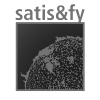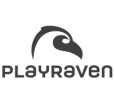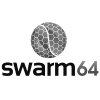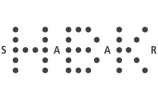Bang - Or how to make a VCS demo
SvOlli / XAYAX
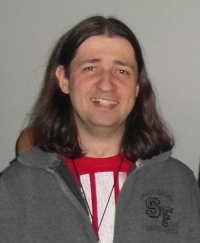
Audience: You want to know how a VCS demo is made
On last years Revision 2014 the demo "Bang!" running on an Atari 2600 VCS won first prize in the oldschool demo competition, beating releases done on "more advanced" platforms like Amstrad CPC, Commodore 64 and Atari XL/XE.
In this talk, we take a look on how the demo was done and what are the accomplishments on each of the demo parts.
Color Grading - Theory and Practice
psykon / mercury
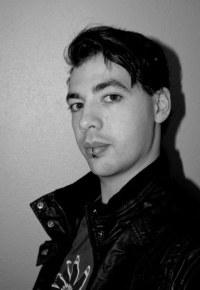
Audience: Coders and artists interested in the craft, tools, and concepts of enhancing images
This seminar is meant as an introduction to the world of color grading. With a special focus on realtime productions. It will be split into three major parts:
- The theorys behind color grading: We will look at the main concepts on how to controll mood, perception and emotions of an image trough color altering and enhancement
- The tools of the craft: A walkthrough of Davinci Resolve, one of the most used color grading suites. We take a quick look at the tools that make the grading process efficient and fun
- Grading demos: A presentation of the mercury color grading toolset and how to implement color grading principles into realtime productions
Belgian Beers For Advanced Users
FRaNKy / RBBS

After many request from those who experienced and survived the 2014 "Introduction to Belgian beers" we have a follow-up seminar that will go deeper into history, go for more extremes and will even further brighten your horizon on the Belgian Beers. If you attended in 2014 you know what to expect, if you did not - all the rumors you heard are true, except THAT one.
- A participation fee of 7.50 Euro is requested for taking part in this seminar, as we have to pay for the beers you will taste
- There will be an attendance limit of 30 people as we need to keep the tasting manageable
- Drunk people will not be allowed in
- Seminar is 18+
- There will be no toilet breaks, be prepared!
9 Legal Things You Wish You Had Known When You Started Coding For Money
Netpoet

Audience: (Soon-to-be) Self-employed software developers
In this seminar, Frank/Netpoet (attorney, yadda-yadda) talks about legal struggles that self-employed software developers wish they had known to avoid before. He will cover contract basics as well as licensing aspects, cooperation hints, liability, and little tricks to ease things up and help developers avoid tar pits. Better join Frank on Saturday at 10:00 AM, and bring coffee (for yourself, too)!
A real-time post-processing crash course
Zavie / Ctrl-Alt-Test

Audience: Coders and designers, of any level
Over decades photographers, then filmmakers, have learned to take advantage of optical phenomenons, and perfected the recipe of chemicals used in films, to affect the visual appeal of their images. Transposed to rendering, those lessons can make your image more pleasant to the eye, change its realism, affect its mood, or make it easier to read. In this course we will present different effects that can be implemented in a real-time rendering pipeline, the theory behind them, the implementation details in practice, and how they could fit in your workflow.
Why you should make an emulator
doz / CRTC
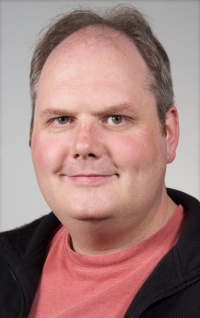
Audience: Anyone who is interested in understanding how emulators work
We'll start by looking at the the essence of what an emulator is, some uses of emulation outside of retro gaming and the demoscene, and how emulation principles can be applied to other areas of programming.
Next, we'll look at some common approaches and potential pitfalls with software emulators and finish with a brief introduction to FPGAs and how hardware emulation techniques differ.
We build the Atari Punk Console
DIY Music Hardware Workshop

Audience: Not afraid to solder and having fun with bleep-bleep noises
The Atari Punk Console is a popular circuit that is a "Sound Synthesizer" and was published in 1980 and later called "Stepped Tone Generator". It was named "Atari Punk Console" because its "low-fi" sounds resemble classic Atari console games from the 1980s, with a square wave output similar to the Atari 2600. Atari Punk console is an astable square wave oscillator driving a monostable oscillator that creates a single (square) pulse.
There are two controls, one for the frequency of the oscillator and one to control the width of the pulse. The circuit is a simple DIY noisemaker circuit that is easy to build, easily adaptable and is configurable in many ways. It is often suggested as a good circuit to build for beginners.
Participants get the complete DIY kit and headphones as well as a set of adapters for the home stereo for 0x10h Euro. Please subscribe to this workshop by leaving a mail.
Demo Age Analytics: Is the visual quality of demos measurable?
indica / MEGA

Audience: Demo Artists
This seminar presents new insights about demo artwork and relates to previous work. Demo artwork represents specific aesthetics in relation to scene-specific design principles and techniques by using diverse computational platforms. The development and composition of elaborated visual demo effects with music is the main emphasis. Therefore success and popularity of each artwork is closely related to the individual visual perception of the viewer. In competitions only the surface of each artwork is visible while the underlying algorithms stay concealed.
What kind of visual aspects make the participant vote for the presented demo? What separates a “good” from a “not-so-good” demo? Is there even a recipe how to make a good demo?
In this seminar demo art is analyzed on a meso level in regard to the specific composition and certain visual characteristics. Therefore the developed method is introduced and discussed to find out if the visual quality of demos is measurable.
Fucked up for a cause
SvOlli / XAYAX
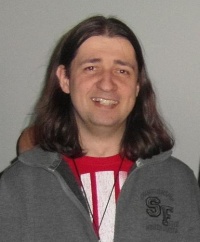
Audience: Anyone who wants to know more about the VCS
The Atari 2600 VCS is the most fucked up hardware I've encountered so far.
Over time I learned that most of the fuck ups are in there for a cause. Let me show you a few examples on why things are on the system the way they are.
This talk is intended to be a small step back to the beginning of the 8 bit era, for entertainment only. No coding knowledge necessary.
The Timeless Way of Building Geometry - How to model Signed Distance Functions
cupe / Mercury
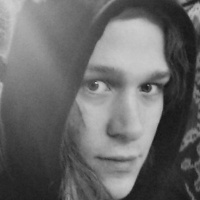
Audience: Graphics Coders, 3D Artists. Some moderate code reading skills required
Good Signed Distance Functions define geometry by providing a semantic description that is very close to the essence of what the shape actually is - but that is almost completely lost when working with polygons or voxels, who solve the problem by throwing big amounts of data at it. Think vector graphics vs. pixels. As a result, SDFs can describe objects in an elegant way that makes variation, animation and last-minute changes trivial.
Since building good SDFs is not straightforward, this talk will focus on patterns that help with the modelling process by making it more structured, such as two different families of operators, debugging views, and assorted best practices that have helped us build last year's "the timeless" and other 64k and 4k intros.
A very short introduction will show what a Signed Distance Function is (spoiler: a piece of code), what properties it should have and how it is commonly rendered.
We will then probably spend most of the time live-coding SDFs and looking at their renderings, also covering limitations as well as issues that arise when rendering SDFs on graphics hardware such as optimizing rendering performance and shader compilation times.
Supraleiter and its physically-based-rendering techniques
BeRo / Farbrausch + urs / mercury
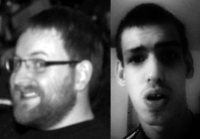
Audience: Game and graphics developers
The talk is a survey of current PBR techniques and improvements which BeRo has done for the engine in Supraleiter. It cover many topics, for example physically-based surface shading, physically-based sky rendering, physically-based volumetric light scattering, order-independent-transparency, nice (soft-)shadows by Sample-Distribution-Shadow-Mapping and realtime ray tracing of hard shadows as feasibility-study-alternative to shadow mapping.
How to hack together a moon probe
tjoppen^DSS

Audience: Space fans, ham radio operators and people interested in electronics
Space Science Sweden is a newly formed group of Swedish hackers and academics attempting to design a simple experiment that will hitch a ride to the moon with the help of Part-Time Scientists' moonshot for the Google Lunar XPrize.
In the seminar it will be a bit about what we're currently doing, future plans and requesting feedback from the audience.
Our newly created website and blog provides you some more info on the project.
Events At Revision
Seminars
- Bang - Or how to make a VCS demo
- Color grading - theory and practice
- Belgian beers for advanced users
- 9 legal things you wish you had known when you started coding for money
- A real-time post-processing crash course
- Why you should make an emulator
- We build the Atari Punk Console
- Demo Age Analytics: Is the visual quality of demos measurable?
- Fucked up for a cause
- The timeless way of building geometry - how to model signed distance functions
- Supraleiter and its physically-based-rendering techniques
- How to hack together a moon probe


